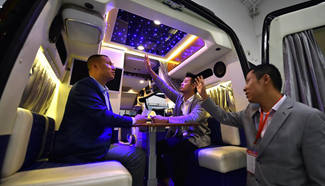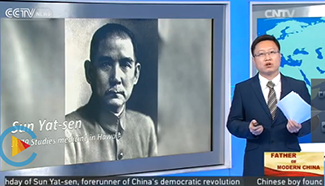URUMQI, Nov. 11 (Xinhua) -- A flying machine carrying a special "passenger" -- namely a tortoise -- reached an altitude of 12,000 meters on its maiden flight Thursday night in northwest China's Xinjiang Uygur Autonomous Region.
Luan Lin, co-founder of the Kuang-Chi Group that invented the device, said her team had expected Traveller II to reach an altitude of 20,000 meters. However, problems with communication and remote control began when it reached a height of 12,000 meters over Bostan Lake in Xinjiang, and the team had to give up.
Luan said the fault would not dampen the team's enthusiasm for inventing vehicles for near space travel.
The main cabin of Traveller II has a diameter of 2.5 meters and weighs more than 1 tonne . It has a life-support system able to provide an environment suitable for humans. The capsule is lifted by a helium balloon of some 40 meters in diameter. The tortoise was there to provide experimental data, testing the cabin's environment.
"This is our second generation prototype. We can now communicate with near-space from the earth and use solar energy to drive the propeller during the flight," Luan said.
However, as the flight did not reach 20,000 meters, life-support systems and the propeller were not fully tested, she said.
The test site was chosen for its lack of commercial or military flights. However, winter at Bostan Lake is extremely harsh. The test flight was originally scheduled for Sunday but postponed due to blizzards and strong gales.
Luan said the Traveller series will give human travellers a superb sense of safety and travelling comfort. The Shenzhen-based company plans to eventually take six people at a time on flights to altitudes between 20,000 meters and 24,000 meters.
In addition to passenger flights, the Traveller also has potential to carrying out applications ranging from communications and meteorology through remote sensing. The near-space craft could also capture data for studies of cosmic and solar physics.
"Near space" refers to altitudes between 20,000 and 100,000 meters, an area has yet to be explored by humankind.
Kuang-Chi Group began work on the Traveller program in February last year. Its Traveller I reached an altitude of 21,000 meters over New Zealand in June.
Liu Ruopeng, president of Kuang-Chi, said the company plans a test flight with human passengers next year.
Kuang-Chi Group, founded in 2010, is a global innovation company. Originating from a five-person team, the company has expanded to a global community of 1,400 employees involved in industries including aerospace, smart cities and artificial intelligence. Its subsidiary Kuang-Chi Science is listed in Hong Kong and Australia. It also has an overseas firm, Martin Jetpack, making personal flying equipment.










